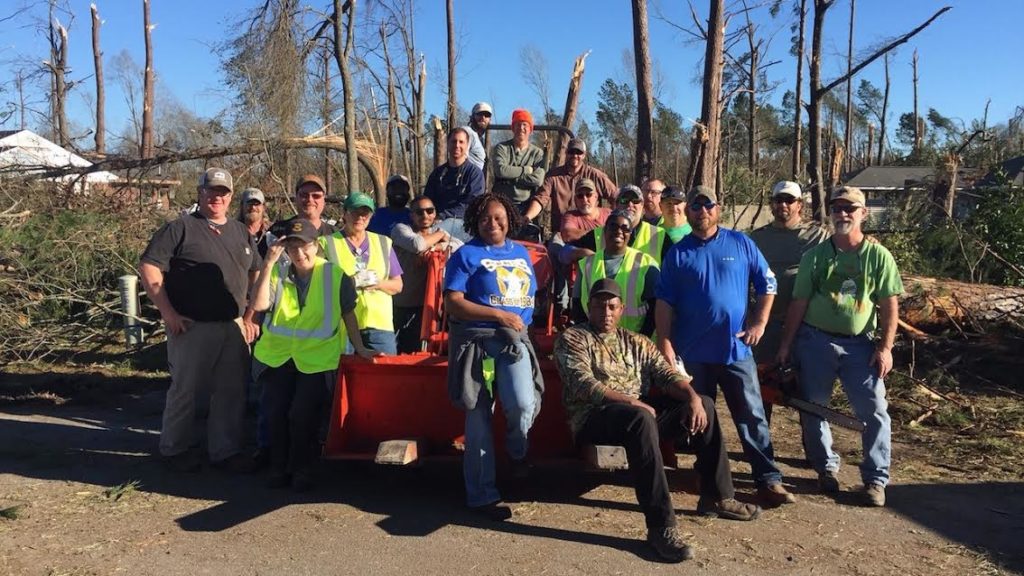
 Special to the Philanthropy Journal
Special to the Philanthropy Journal
By Darya Bontempo and Henry Carlson
As a land-grant university, NC State is committed to providing students hands-on, highly-engaged learning opportunities AND to providing research that is of direct, practical use to the fields we work in. Philanthropy Journal proudly presents the latest in a series of evidence-based resource articles developed by Dr. Amanda J. Stewart‘s masters level Management of Nonprofit Organizations classes. These articles represent a perfect overlap of engaged learning and practical research.
A mission statement for nonprofit leaders is much more than a generic statement listed in the about us section. From crafting policy to influencing the relationship with stakeholders and the broader community at large, the mission is a conduit for proper protocol. By examining how a nonprofit leader interacts with the mission, we were able to examine the extent that leaders are consulting the mission in their daily activities. In the ever-changing landscape of nonprofits, the mission statement is a keystone that guides, directs and can be the organization’s most useful tool. [1]
 A well-crafted mission statement can guide leadership and ensure success in the future. The leader of the modern-day nonprofit must have a hand in everything from training volunteers to fundraising and use the mission to guide their decisions. Together the nonprofit leader and the mission act in a valuable and tangible way to navigate the nonprofit through daily programming and activity. Does the mission really matter to leaders in the day to day? By interviewing Rachel Stine, Program Director of Book Harvest and Bruce Ham, CDO, Doug McMillan, CEO, and Tony, Chief Experience Officer of the YMCA of the Greater Triangle, our points were elaborated and sharpened.
A well-crafted mission statement can guide leadership and ensure success in the future. The leader of the modern-day nonprofit must have a hand in everything from training volunteers to fundraising and use the mission to guide their decisions. Together the nonprofit leader and the mission act in a valuable and tangible way to navigate the nonprofit through daily programming and activity. Does the mission really matter to leaders in the day to day? By interviewing Rachel Stine, Program Director of Book Harvest and Bruce Ham, CDO, Doug McMillan, CEO, and Tony, Chief Experience Officer of the YMCA of the Greater Triangle, our points were elaborated and sharpened.
 The mission drives focus for leaders.
The mission drives focus for leaders.
Mission statements help to ensure the nonprofit stays focused on their goals. Rachel Stine shared that the mission statement helps bring a focus to leadership and staff and allows for managers to say no to things that might bring the organization off track. Doubling down on this notion Bruce Ham, the Chief Development Officer at the YMCA of the Triangle stated, “successful organizations have a simple, strong, long-lasting mission.” With a mission that is simple and strong, a leader is able to “live into it.” [2] Being interested in the mission wherever you work and aligning with the mission is important. [3] Not only does a strong mission help the nonprofit leader by setting guidelines and establishing a lens to view programming through, it brings together the whole organization. When the leadership is committed and passionate about the mission, staff, volunteers, and the board will feel connected to the people in the movement instead of just working individually. [4]
The mission drives innovation for leaders.
Nonprofit leaders can use the mission to encourage innovation and change while still staying true to the mission and goals of the organization. At Book Harvest, the mission is to “provide an abundance of books and ongoing literacy support to families and their children from birth and serve as a model for communities committed to ensuring that children are lifelong readers and learners.” The mission has made room for their innovative programs to be used in other communities around the state and it continues to expand. Creativity and innovation are welcomed so that new programs and ideas are tried out in order to test effectiveness. At the YMCA of the Greater Triangle, the mission of “putting Christian principles into practice through programs that build healthy spirit, mind, and body for all,” allows for innovation and change to not be stagnant. If an adjustment does not work, they are able to push it aside and if it works, they explore further. [6]
The mission drives leadership forward.
In a challenging time or a tumultuous stretch for a nonprofit organization, a strong mission can encourage the leaders to move forward. A successful nonprofit leader will use the mission statement to help find motivation. The motivation takes multiple forms here and Bruce Ham of the YMCA spoke to this notion “When you get tired and frustrated… the mission gives (you) the enthusiasm, the drive, and the spirit to move forward.” [6] If a nonprofit leader is facing some personal hardship a strong mission statement eliminates the possibility of harm to the nonprofit. A strong mission statement in this instance will guard against and ensure the nonprofits values and desires are still being met during the personal struggle of the nonprofit leader. A strong and powerful mission gives clarity and motivation to the nonprofit leader, but a poor mission statement could compound daily issues that the leader may incur. The mission statement also drives leadership forward by making sure ideas do not stagnate or become complacent. At the YMCA, the mission statement serves the leader’s ability to influence and implement programming. Everything that is done is through the lens of the mission. “Is this program, our long-range plan, our actions, is our work in line with the mission? And if it’s not, we toss it….” states Bruce. Here the mission serves as a vanguard against complacency and ensures that the leader is constantly doing their best to move the nonprofit forward with the values and goals in mind.
The mission drives leaders relationships with stakeholders.
A nonprofit lives off relationships and it is imperative that the leader tries to build and maintain these relationships. From stakeholders to volunteers and potential donors, a nonprofit leader’s understanding of the mission statement helps guide and facilitate these connections. The nonprofit leader is the face of the nonprofit and therefore is mainly responsible for its image. From public relations to private conversations, the mission must be in the nonprofit leader’s thoughts while creating and maintaining relationships. At the YMCA of the Triangle, McMillan, relayed how he personally uses the mission to garner relationships, “we use it to build genuine relationships… people have to trust in the institution.”[8] Communication about the mission and vision allows for community members to play a large role within the organization.[4] The mission statement helps plays an equal role in the forming of relationships. Sometimes the foundation of the relationship that was built generations ago. A strong mission statement will better allow the leader to cultivate relationships that started in the past, McMillian relayed a sentiment he personally believes to hold true for the nonprofit “the trust began with us but the trust is from your grandfather who went to camp thirty or forty years ago and we are just carrying that forward.” [9]
In regard to volunteers, a successful nonprofit leader uses training and language held within training materials to ensure the mission is always thought of. If you keep your mission in mind and convey it to your volunteers you not only create great volunteers, you build valuable relationships with your stakeholders. Chief Experience Officer Tony Campione at YMCA of the Greater Triangle stated, “In today’s world you earn trust every day. The emphasis we place on quality, every day we have to continue to earn that trust.”[11] Sometimes volunteers will reach out and the nonprofit leader will use the mission to help analyze if they are a right fit, McMillan spoke of his experience, “visionary volunteers want to help with big ideas and the mission will help understand if they can accomplish this.”[12]
Simply put the mission is everything for the nonprofit leader. Whether a small nonprofit just starting out, or a large nonprofit looking to realign, the mission will guide the day to day and the future. Bruce Ham nicely concluded, “You got to have a strong mission, you must be able to live it, state it, and enunciate it clearly.” [13]
[1] Future Trends Bruce Glasrud “Your Mission Statement Has a Mission.” Accessed 4/6/2019
[2] Stine, Rachel. Personal Interview with Bontempo, Darya. 03.06.2019
[3] Ham, Bruce. Personal Interview with Carlson, Henry. 03.13.2019
[4] Stine, Rachel. Personal Interview with Bontempo, Darya. 03.06.2019
[6] Ham, Bruce. Personal Interview with Carlson, Henry. 03.13.2019
[7] Ham, Bruce. Personal Interview with Carlson, Henry. 03.13.2019
[8] McMillian, Doug. Personal Interview with Carlson, Henry. 03.13.2019
[9] McMillian, Doug. Personal Interview with Carlson, Henry. 03.13.2019
[10] McMillian, Doug. Personal Interview with Carlson, Henry. 03.13.2019
[11] Campione, Tony. Personal Interview with Carlson, Henry. 03.13.2019
[12] McMillian, Doug. Personal Interview with Carlson, Henry. 03.13.2019
[13] Ham, Bruce. Personal Interview with Carlson, Henry. 03.13.2019
Darya Bontempo is a graduate student in the Master of International Studies program at North Carolina State University. She is interested in nonprofit management with a focus in International Higher Education.





